Sharlyn J. Lauby's Blog, page 19
August 15, 2024
Reporting a Hostile Work Environment – Ask #hr bartender

Estimated reading time: 3 minutes
No one wants to work in a toxic, hostile place. No one. According to an article in Fast Company, toxic workplace cultures have driven 20% of U.S. employees out of their jobs in the past five years – to a turnover cost greater than $223 billion. But I will admit that sometimes people don’t know what to do when they’re in one. That’s the focus of today’s reader note. (Full disclosure: I did edit this note to remove any identifying information.)
Hello. I’m trying to get my message out about a hostile work environment at my company. This behavior must stop. Threats and intimidation at director level – unpaid overtime – people who speak up being laid off. Managers yelling and throwing things, employees intimidated into not using sick time. Any advice on who I can get my story too? Even when this was going on, the HR director kept saying they were too busy to meet with me.
Most of this can be confirmed by other employees, was admitted to by supervisors, and can be proven with company documentation if they were to get investigated or allow an investigation.
Obviously, concerns like these need to be taken seriously. And an investigation should be done to determine if these reports can be substantiated. That’s the purpose of an investigation. So, I can’t really comment on the specifics of this situation. But what I can do is share some articles that focus on these types of situations and a few options that employees can consider.
Reporting Workplace Bullying to HR
Retaliation claims are more than a legal risk. Yes, it’s true – retaliation can cost companies thousands of dollars. But they can also ruin company culture. And when your culture is one of distrust, well…you know…
HR Failed to Investigate an Incident
Employees need to feel they can report concerns to the organization. AND that the organization will properly investigate the situation. Not only is there a liability in ignoring an employee’s complaint, but it’s also just not the right thing to do.
Employees: When Should You Lawyer Up
I honestly believe that no one wants to escalate issues to lawyers and government agencies, but unfortunately, sometimes it must be done. The answer isn’t seeking free legal advice. It’s getting educated on the right times to use these options.
Quitting: How Much Frustration Can You Deal With
I want to commend employees for sharing their concerns with management and trying to figure out a way to make things work before thinking about quitting. As a HR pro, that’s what we hope happens. Employees give us feedback to make the workplace better. But I also know that when employees bring feedback, the organization must be prepared to do something with it. And if they don’t, then employees will make their own decisions.
Honestly, I shouldn’t have to say this, but I will anyway. Employees who have concerns should be able to address them with the organization. HR departments should be willing to listen to concerns and investigate them. And companies need to be prepared to deal with hostile behavior. Not addressing problems doesn’t make them go away. In fact it’s likely that the only things that will go away are employees.
Image captured by Sharlyn Lauby while exploring the streets of Orlando, FL
The post Reporting a Hostile Work Environment – Ask #hr bartender appeared first on hr bartender.
August 13, 2024
What to Do After Employee Training is Over
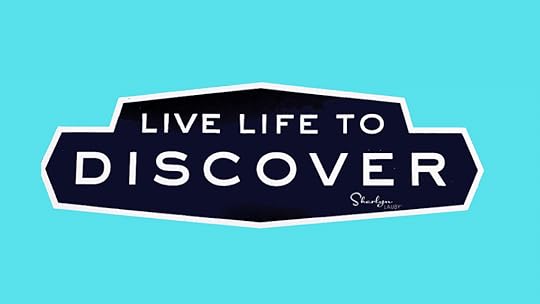
Estimated reading time: 3 minutes
Employee training is important. I’d like to believe that we agree on this. But one component of training that doesn’t get nearly enough attention is what to do after the training program is over.
Yes, part of designing employee training should be to offer suggestions for activities that managers and employees can do to reinforce the training they just received. The principles of adult learning say that if we can immediately apply what we learned during a training session that retention increases. This is why organizations shouldn’t train new hires on something they won’t have exposure to for six months. The training should happen right before someone starts to use it.
Here are a few things to consider when you’re designing and implementing training to ensure that all the organization’s efforts are reinforced after the training program is over.
Offer a training overview or summary for leadership. One of the reasons that leaders often don’t know how to support employee training is because they don’t know what happens during the training session. Provide the leadership team with a summary or overview of the session so they know. Maybe conduct a mini session so leaders can see it. Encourage leaders to stop by when training is happening to show their support for the program, and they can also hear the discussion.
Build activities into the training program for employees to do on the job. For example, in a supervisory skills training program on delivering feedback, ask participants to think of a person who has done something wonderful for them lately. Have them write the person’s name down and a couple of sentences about what they did. Then tell them that their post-training homework is to tell that person how much they appreciated it. Now they have an activity to do when the program wraps up.
Consider adding a follow-up coaching session to employee training programs. Depending on the type of training, it could make sense to conduct a follow-up coaching session with participants to debrief an activity. Using the example above, supervisors could talk with the session trainer about how their feedback conversation went. Not only does this hold participants accountable for doing the task, but they can ask questions in a safe environment.
Provide leaders with the tools to support the training content. We often talk with managers about how they need to support sending employees to training. We need to also ask them to support the training after the employee attends the session. There’s nothing worse than an employee returning from a training session only to hear that they don’t need to do anything they just learned. (And yes, this does happen.) Give managers some talking points that they can discuss during one-on-one meetings to keep the conversation going.
The whole purpose of an employee training program is to convey knowledge and change behavior. The change part doesn’t happen immediately. Think of Lewin’s Change Model. We go to a training session (unfreeze), practice what we learned in training (change), and then retain what we’ve learned (refreeze). In order to create retention, we have to practice. The practice process happens on-the-job with the support of the organization.
Organizations spend a lot of resources on training – designing the program and giving employees time off to participate. Which is great! We need to continue to conduct training. But I hate to see employee training not have its intended results simply because there wasn’t a post-training activity plan in place.
Image captured by Sharlyn Lauby while exploring the streets of Atlanta, GA
The post What to Do After Employee Training is Over appeared first on hr bartender.
August 11, 2024
Employers Really Should Encourage Employee Election Engagement
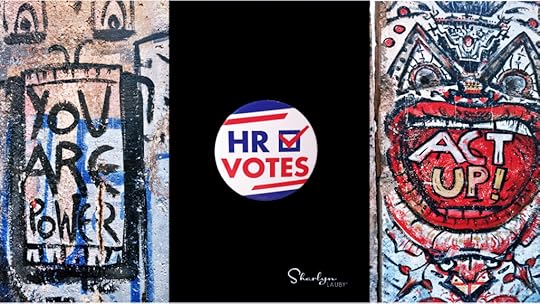
Estimated reading time: 4 minutes
In the United States, there’s an election being held on Tuesday, November 5, 2024. In addition to electing a president and vice president, all 435 seats in the House of Representatives and 34 of the 100 seats in the Senate will be contested. 13 state and territorial gubernatorial elections, along with numerous other state and local elections will be contested. Bottom-line: The outcome of November’s election will play a significant role in our personal and professional lives, which is why I want to discuss elections and voting for two reasons:
First, organizations need to be aware of the voting laws in their state. The Society for Human Resource Management (SHRM) has an Express Request on State Laws and Time Off for Voting. If your organization doesn’t have a policy in place regarding voting leave, SHRM also has a sample policy that you can use to draft one. Employees want to know this information so they can make plans to vote. Companies do not want to be accused of repressing an employee’s right to vote. Let employees know the policy – and let them know early.
And that leads to my second point. Please go vote. Find time to get educated about the issues that are important to you and go vote. I do not spend a lot of time here on HR Bartender talking about politics, but I do believe participating in the voting process is important.
Learning about voting and the issues being debated takes time, so I thought it would be good to share some resources now. Consider building some time into your schedule now versus waiting until the last minute. I know that if I wait until right before election day, trying to learn about all the candidates and their stance on the issues becomes quite daunting.
Last election, I discovered an organization called Civic Alliance. It’s a nonpartisan coalition of businesses that have made a pledge to encourage employees and consumers to engage together in civic life, specifically for elections. Some of the businesses that have taken the pledge include Amazon, Capital One, Deloitte, Facebook, Hilton, Intel, LinkedIn, Microsoft, Starbucks, Target, and Verizon. You might find their initiatives interesting.
There’s been a lot of talk about voting rights over the past few years. As part of my prep for this year’s election, I’ve decided to refresh my knowledge and read a couple of books on the topic. Ben Sheehan’s “OMG WTF Does the Constitution Actually Say?: A Non-Boring Guide to How Our Democracy is Supposed to Work” is a great way to digest our founding document. The book not only shares the actual wording from the Constitution, but it offers an easy to digest interpretation. Also Kim Wehle’s “What You Need to Know About Voting and Why”. Wehle is a law professor and legal analyst, so the content is a bit heavier, but it is a reminder that the right to vote is important and not to be taken for granted.
Many of the issues being currently being debated in Congress are workplace issues. The outcome of our elections could have an impact on both employers and employees. If you’re looking for a place to start your research on some of the legislation related to work, don’t forget that SHRM has an advocacy page that shares public policy issues.
In addition to being educated on workplace issues, another aspect of election engagement is getting informed on social issues. Sadly, misinformation and disinformation are still prevalent. I’ve written before about media literacy being a business competency and knowing how to navigate digital information. It’s a good reminder to double check your sources as you’re forming opinions. I know I will be doing that.
I’d like to believe we can all agree that voting is important, regardless of our views. Encouraging people to vote makes sense. People need to participate in the process. That means having policies and practices in place that encourage election engagement.
Image captured by Sharlyn Lauby while exploring the streets of Washington, DC
The post Employers Really Should Encourage Employee Election Engagement appeared first on hr bartender.
August 8, 2024
Change Management: Pause to Reflect Before Taking the First Step

Estimated reading time: 4 minutes
A few weeks ago, I published an article about a new CEO that fired a long-term employee. If you haven’t read it, I hope you’ll check it out. Since then, I’ve seen people posting stories about something frustrating or disappointing that’s happened to them. Obviously, like the person who was fired without warning, they’re trying to figure out how to deal with it and move on.
Change is hard. Even when we’re dealing with changes that we want, change can be hard. Especially the first step of recognizing the need for change. Whether it’s looking for a new opportunity or adopting a new habit, taking that first step can be daunting.
I don’t know if this will be helpful, but I wanted to share something that I do when I have to deal with an issue. It might be some disappointing or bad news. Or maybe it’s when I realize that I might have to make a change. Unless I absolutely must respond immediately, I give myself 24-hours to process what’s happening. I like to call it my “24-hour funk”. Then I promise myself that I will move on, whatever “moving on” looks like.
For reference, the Cambridge Dictionary defines “being in a funk” as being unhappy. So, to me, I allow myself to be unhappy, mad, frustrated, whatever and then I move on. Being in a funk doesn’t mean I can take my feelings out on others. It just means that I’m allowed to not be happy about whatever happened.
I used to work for a company that used this philosophy. When it delivered bad or unexpected news, they allowed employees to be in a 24-hour funk about it. In fact, it got to be kinda funny at times. An employee might say, “I’m 19 hours into my 24-hour funk. Come back and ask me tomorrow.” Everyone would laugh and it would get handled the next day. Again, let me repeat that being in a funk didn’t include being mean or disrespectful. It was about being able to express dissatisfaction or disappointment.
I was reminded of the 24-hour funk recently with something kinda silly – Pokémon Go. The developers who make the Pokémon Go app made changes to the game. One of the changes impacted the way your avatar looked. My initial reaction was fury! I was livid at how my avatar looked. I was totally ready to delete the game. Then I calmed myself down and said, “give it a day”. After my 24-hour funk was over, I made some changes to my avatar and it’s much more tolerable. I’m still not thrilled but I didn’t delete the game and I’m still having fun. Oh, and I made myself a promise not to buy any more in-game clothes for my avatar until it’s fixed to my satisfaction.
That’s the second part of the 24-hour funk – moving on. Think about what that looks like for you, including the possibility of making a temporary decision until you have more information. Like my Pokémon scenario, maybe you want to make a short-term decision and give it more time before making a long-term decision.
The reason I wanted to mention my 24-hour funk story is because it’s important to give ourselves time to process all the stuff that we’re expected to manage. Especially if we’re being asked to change. It’s okay to give yourself some time to process before acting. In fact, it’s recommended.
Remember Lewin’s change model? It has three steps: Unfreeze, Change, Refreeze. To me, that first step – unfreeze – is difficult. We’re letting go of something. It might be a policy or procedure that we knew how to do without hesitation. Or making the decision to leave our employer or team. Or maybe not doing business with a company any longer. Take time to reflect and process what’s happening before “unfreezing”. It could make the change process easier.
Image captured by Sharlyn Lauby while exploring the streets of San Francisco, CA
The post Change Management: Pause to Reflect Before Taking the First Step appeared first on hr bartender.
August 6, 2024
Make Sure Your Problem Is Not a Polarity

Estimated reading time: 3 minutes
I saw a comment on social media lately that said, “All problems have solutions.” And that’s true. I like to think of a problem as the difference between the current state or condition and the desired state or condition. So, the solution to a problem is to get from where you are to where you want to be.
But not every challenge we face is a “problem”. The book “Polarity Management: Identifying and Managing Unsolvable Problems” by Barry Johnson, Ph.D. introduces the concept of a polarity, which is defined as “the presence of two opposing, opposite, or contrasting attributes, principles, or tendences”. Examples of polarities include:
Low Cost and High Quality
Planning and Action
Innovation and Standardization
Stability and Change
The reason I’m bringing this up is because organizations and individuals can become frustrated if they view polarities as problems to be solved. The key is to manage a polarity. Johnson’s book goes into detail about how to manage polarities but here are a few initial questions to consider:
What are the two “poles” in the polarity?What are the upsides of each pole in the polarity?What are the downsides of each pole in the polarity?What would happen if we focus totally on the left pole and ignored the right one? What would happen if we focus totally on the right pole and ignored the left one?Here’s an example:
Let’s say a non-profit organization is trying to find more volunteers. An individual is evaluating whether they would like to volunteer. This isn’t a problem. It’s a polarity.
The two poles are work and volunteer.The upsides of work are fun work, nice coworkers, money, benefits, etc. The upsides of volunteering are giving back to the community, learning new things, and meeting new people.The downsides of work are less networking with new people, possibly mundane work, and maybe an out of touch boss. The downsides of volunteering include no control over assignments, potential bureaucracy, and no pay.If we totally focus on work and ignore volunteering, we might feel disconnected from the community and unfulfilled. If we focus on volunteering and ignore work, we could be broke and without benefits.The point being, we want to find a way to manage both so we can do both work and volunteer. That might involve volunteering regularly in a small way. Or maybe volunteering at one or two big events a year and asking the organization to support their time off. There’s no wrong answer.
Which gets us back to the quote I mentioned about problems and solutions. The key is understanding if what we’re dealing with is a problem that needs to be solved OR a polarity that needs to be managed. The next time you’re feeling frustrated about a problem not being solved … maybe ask yourself if it’s really a problem. Maybe it’s not a problem – but a polarity.
Image captured by Sharlyn Lauby while exploring the streets of Miami, FL
The post Make Sure Your Problem Is Not a Polarity appeared first on hr bartender.
August 4, 2024
Talk With Your Internal and External Partners About Their Artificial Intelligence
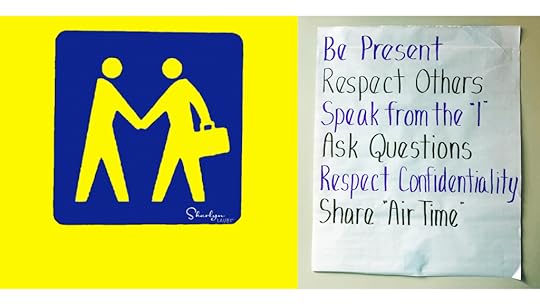
Estimated reading time: 4 minutes
Artificial intelligence (AI) is a regular topic of conversation in today’s business environment. One in four employers are using AI to support HR related activities, according to an article on the Society for Human Resource Management website. And that number is sure to increase over time.
We’ve been talking about artificial intelligence on HR Bartender and some of the things we can do to learn more about the use of AI. It’s important to note that AI isn’t just a human resources tool. It’s an organizational tool, which means that the organization needs to work together to have an aligned artificial intelligence strategy.
During this year’s HR Technology Online event, I listened to Keegan Fonte from PrimePay talk about using AI ethically. My takeaway from his presentation was that the ethical use of AI is very much tied to the way that HR and the rest of the organization partners with each other as well as their external suppliers. Here’s a high-level overview of what to consider.
Be prepared to address bias. We already hear the stories about artificial intelligence and bias. There’s no good reason to deny the potential exists. That being said, organizations and HR departments can mitigate AI bias by regularly examining the data and decision making they are using. Poor data isn’t going to help AI learn what it needs to learn to help the organization. That will lead to poor company decisions, which if left unexamined, will only perpetuate AI bias.
Know and monitor data privacy legislation. There are already some pieces of legislation in place related to data privacy – the General Data Protection Regulation (GDPR) is one of the most prominent. But as AI becomes more widely adopted, there will be more laws. So, HR professionals need to partner with their legal counsel to stay current with data privacy legislation. Look for sources in articles, podcasts, webinars, and conferences to hear about regulations that could impact the use of AI.
Act in a transparent manner. We’ve talked before about the importance of having a company AI strategy as part of an overall technology strategy. In addition, Fonte stressed during the session that organizations need to have company policies regarding the use of artificial intelligence. HR will need to bring together key stakeholders in operations, legal, technology, etc. to discuss what a policy would entail and how it would be monitored and enforced.
Understand the risks. Speaking of strategies and policies, organizations need to understand the risks associated with using artificial intelligence. Some of those risks we know like bias and regulations. There could also be risks we haven’t uncovered yet because AI is still relatively new. Organizations need to discuss their risk tolerance and how they want to handle potential risks when they learn of them.
Ask your partners tough questions. Organizations are most likely to work with a vendor when they start using artificial intelligence. Some of the company’s current technology vendors might introduce an AI feature into existing software. HR departments will want to ask about the company’s track record of using AI and possibly speak with some existing clients that are using the tool. They also might want to ask about auditing AI data. Vendors should be prepared to answer these questions.
Using artificial intelligence ethically begins with the organization reaching consensus on how AI will be used and how new information regarding AI will be evaluated. HR departments need to understand their data, regulations, and current technologies. They will want to partner with IT, legal, risk, and their external vendors to have a legally compliant and ethically responsible AI strategy and policy.
Image captured by Sharlyn Lauby while exploring the streets of Fort Lauderdale, FL
The post Talk With Your Internal and External Partners About Their Artificial Intelligence appeared first on hr bartender.
August 1, 2024
Bookmark This! The Total Rewards Edition
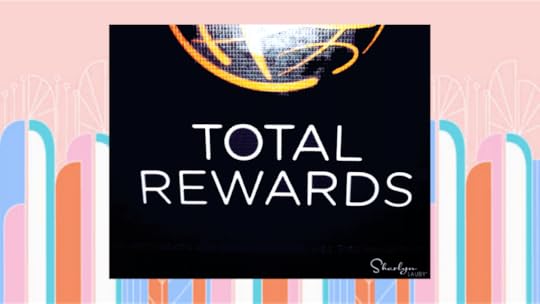
Estimated reading time: 3 minutes
We often talk about the reasons that employees leave an organization. Well, it’s equally important to talk about the reasons that they stay. I saw an article from the Thunderbird School of Management at Arizona State University that said the number one reason that employees stay with a company is competitive compensation and benefits.
When I think competitive compensation and benefits (i.e. total rewards), I think of a plan that is both internally equitable and externally competitive. Organizations should regularly review their total rewards programs to ensure that they are accomplishing their objectives. Here are a few articles to help you focus.
Whether you’re an employee or an organization, there are some things to consider when it comes to discussing pay, especially if the conversation is about pay increases. Don’t let frustration be a factor for mishandling pay conversations. Do the research and have a well thought out discussion.
Front-loading Paid Time Off: What Organizations Need to Know Today
One of the most important benefits that employees receive is paid time off (PTO). Employees want time off to relax and recharge. They might also need time off to take care of personal matters. There are many ways to provide paid time off. One popular way is called front-loading paid time off (aka front-loading PTO).
Everything HR Needs to Know About Lifestyle Spending Accounts (LSA)
Flexibility is a big challenge facing organizations today. Employees want flexibility and it’s hard to design workplace programs, policies, and procedures with huge amounts of flexibility. This doesn’t mean we shouldn’t try. According to CFO Magazine, 75% of large employers offer LSAs to their employees. So, what are lifestyle spending accounts and why would organizations consider one?
New Employee Benefits Transparency Rules: What HR Needs to Know
Employee benefit programs help organizations attract, engage, and retain the best talent. But for this to happen, benefit programs need to be transparent and easy to use. Transparency-related employer duties for health and welfare plans originated from the Consolidated Appropriations Act (CAA) of 2020. In a nutshell, employers are required to transparently report about target zones of their employee healthcare benefits. This means they must disclose information about healthcare services, such as cost-sharing provisions, coverage limitations, prescription drug costs, and out-of-pocket expenses.
While this is just a few aspects of total rewards, it can help start the conversation about offering benefits that align with organizational values. It’s hard for a company to say wellness and wellbeing are important then not offer any benefits to support it. The alignment isn’t there.
Now could be a great time to assess the organization’s current total rewards package and decide if there are some changes to budget for in the upcoming year. Take a proactive approach to offering a competitive total rewards program.
Image captured by Sharlyn Lauby while exploring the streets of Las Vegas, NV
The post Bookmark This! The Total Rewards Edition appeared first on hr bartender.
July 30, 2024
How to Influence Your Organization
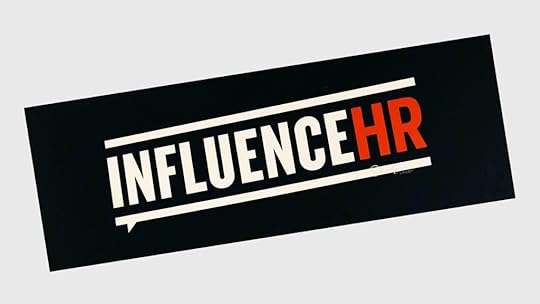
Estimated reading time: 4 minutes
I believe that management and leadership are two different things. Management is defined as planning, organizing, staffing, leading, and controlling. Managers plan the work that needs to be done, organize the resources necessary to do the work, staff the team who will be responsible for doing the work, lead the team, and control the quality of the result.
Leadership is defined as the ability to influence. Yes, managers need to be leaders. But leaders do not have to be managers. Everyone can be a leader. Yes, everyone.
That’s why I was interested to hear Michael Walters’ session at SHRM 2024 this year. Walters is the chief human resources officer at Samsung Semiconductor and his session was titled “Harness Power for Good: How to Influence Effectiveness Within Your Organization”. This session focused on using influence to make good things happen in your organization. Here are my takeaways from the session:
Be good at your job. Walters reminded us of the importance of staying relevant in our jobs. If we want to influence, we need to have skills. Obviously, this includes the hard skills and/or competencies of human resources. It also includes the softer or power skills like relationship building, curiosity, problem solving, etc. I loved that Walters included in the session a focus on the value of time. If we want to influence, then we need to use our time wisely. Get out of your own way. We need to minimize the influence that negative self-talk and imposter syndrome have on us. I realize this is very easy to say and difficult to do. It starts with becoming more self-aware. If we want to influence others, it can be helpful to understand our strengths, weaknesses, and what influences us. Walters also mentioned that sometimes getting out of our own way is holding ourselves accountable for our mistakes by owning the mistake and moving on. Focus on the decision. When we talk about influence, we’re often trying to influence a decision. It’s important to understand when the decision will be made, who will be involved in the decision-making process, and how the decision will be reached. Walters reminded us that sometimes decisions are made during the meeting after the meeting. He also reminded us that sometimes as much as we are advocating for a decision, we might only get a piece of what we want. We will have to figure out how to handle that.Know your power. I’ve written before about the different types of power. If we want to influence the organization, we need to recognize the types of power we have, the ones we need to cultivate, and how to properly use power. That doesn’t mean there won’t be times when we need help to influence the organization. We might have skills in one area but need someone with skills in another. Or maybe we don’t have as much access to the decision makers and need introductions. Tell the story. Once we gain access to the people we want to influence, we need to be prepared to tell a compelling story. Influence is about action and if we want people to make the decision that we’re advocating for … then we need to be able to tell the story that will make them answer “yes”. Learning how to tell a brief and engaging story is something we can learn. Start practicing and perfecting your skills.As leaders, there will be times when we need to influence the organization. Some of the things Walters talked about during his session were focused on things we need to do all the time like being good at our jobs, getting out of our own way, and telling stories. Others – like focusing on the decision and knowing your power – might be more of a focus when we’re actually trying to actively influence a decision. Either way, being able to create influence is something that we need to think about regularly. That way, when we need to do it, we’re ready.
Image captured by Sharlyn Lauby after speaking at the HR Technology Conference in Las Vegas, NV
The post How to Influence Your Organization appeared first on hr bartender.
July 28, 2024
4 Steps for Managing Polarizing Workplace Conversations

Estimated reading time: 3 minutes
I don’t think it’s unrealistic to say that we’re seeing polarization in society. And because we are, it’s not unrealistic to think it will have an impact on our work environment.
During this year’s Society for Human Resource Management (SHRM) annual conference, I had the chance to hear Bernadette Jones, SHRM-SCP, founder and CEO of Visionova HR Consulting located in San Francisco, California talk about “Peacekeeping in Polarizing Times”. I thought the session was timely.
Jones outlined four steps that human resources professionals should consider when it comes to dealing with polarizing conversations and behaviors at work. Here are my takeaways from the session.
Understand the challenge. Organizations strive to build cultures focused on respect and inclusion. When challenges occur, it’s important to understand the impact of the challenge and the consequences both in terms of what happens if the organization addresses it and what happens if they don’t.
Guide the discussion. Sometimes a polarizing comment can come from a member of the senior leadership team. Jones reminded us that as HR professionals we can be proactive and guide the discussion toward alignment with company culture. Senior leaders and frankly everyone in the organization need to align their communications with culture.
Set boundaries. Speaking of communication, Jones suggested it could be helpful to set boundaries for some conversations (i.e., town hall meetings, employee resource groups, etc.) If the organization doesn’t have a communications policy, maybe it’s time to consider one. Everything has a time and place, and a communications policy can help set those boundaries.
Take Action. The first three points really lead to this one. Organizations need to realize that challenges will happen and put measures in place to manage them. This includes:
Taking an assessment of the organization. Be honest about the extent that the organization is facing polarizing conversations and behaviors. Developing policies, like the communications one mentioned above. Realistically speaking, organizations cannot develop policies for everything, but companies do have rules, and they can define what those rules will be. Providing training in subjects like conflict management and problem solving. Part of the reason that conflict escalates is because we haven’t been trained to deal with it. Training employees on these topics would be good for them and the business.Supporting employees who report concerns. Organizations need to take employee concerns seriously. Challenges that are left unaddressed can turn into big problems. Regularly reviewing and updating the company efforts. The business world is always changing, and organizations need to change with it. That means regularly reviewing where we are and making necessary policy adjustments.Jones’ session was a good reminder for human resources professionals that polarizing behaviors can have a negative impact on the operation, which ultimately impacts the bottom-line. If organizations want to be successful – and we know they do – then being proactive and prepared to deal with polarizing behaviors is essential.
Image captured by Sharlyn Lauby while exploring the streets of Las Vegas, NV
The post 4 Steps for Managing Polarizing Workplace Conversations appeared first on hr bartender.
July 25, 2024
Consider Artificial Intelligence In Developing Your HR Tech Stack
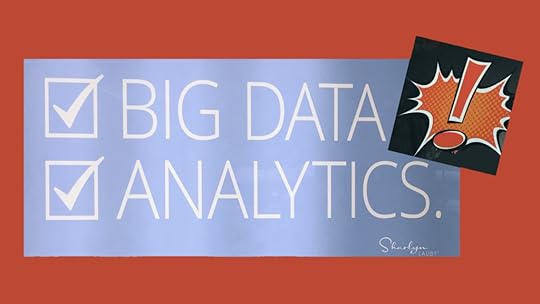
Estimated reading time: 3 minutes
A couple of years ago, I published an article about how an “organization’s technology strategy needs to include building the perfect tech stack”. It’s still true today. A quick refresher: a tech stack is a grouping of technology services that are “stacked” together to create the best, most effective, and efficient process possible. For example, a traditional talent acquisition tech stack might look like this:

What’s different in today’s world of tech stacks is artificial intelligence (AI). At this year’s HR Technology Online conference, I heard a panel of experts from Visier talk about the dynamics that organizations need to consider when introducing artificial intelligence into the existing tech stacks.
PREPARE for the integration. One of the first questions that organizations need to ask themselves is how can AI integrate successfully with the existing systems? This isn’t just about the technology compatibility. Organizations need to consider their entire tech strategy including legalities and ethics. They also need to think about the level of AI expertise they have access too – in-house as well as from external sources.
START the integration. As organizations bring AI into their tech stack, there are lots of factors to consider. Three factors that were mentioned in the presentation were data, training, and cost.
Let’s start with data. What’s the quality of the organization’s existing data? Does the organization have enough data storage?
Organizations should also consider training – both training for users as well as training for AI (also referred to an LLM). The presenters strongly reminded us that organizations need to review the terms of service for any AI integration to understand if how the company’s data will be used to train AI. Organizations need to be fully aware of how their data is being used.
Another factor to consider is cost. While there are free AI tools on the internet, if you’re serious about using AI … you’re going to pay for it. How much the organization will pay depends on how they will use it. Companies need to understand the pricing structure for what they are getting.
USE the integration to achieve higher performance. While the presentation covered this at the end, I could see this discussion being something to consider at the beginning as well. If the organization is bringing AI into their technology, they should have some rationale for doing so. And the answer isn’t “because everyone is doing it”. For example, is AI going to streamline a process? Or maybe improve decision making? These are specific things that can be measured, which means the organization can regularly evaluate the effectiveness of their AI integration.
I understand that artificial intelligence is fun to play around with. And we all want the latest technology. But it needs to work … and work well. I’m not telling anyone to rethink their AI integration. But remember the first HR Technology Online session I wrote about? It was titled “HR Tech Success Starts with Asking the Right Questions”. Well, I think this panel discussion totally reinforces that. Artificial Intelligence is going to transform business. Organizations need to ask the right questions so they can integrate it with existing technologies in the best way possible.
Image captured by Sharlyn Lauby after speaking at the HR Technology Conference in Las Vegas, NV
The post Consider Artificial Intelligence In Developing Your HR Tech Stack appeared first on hr bartender.
Sharlyn J. Lauby's Blog
- Sharlyn J. Lauby's profile
- 10 followers



